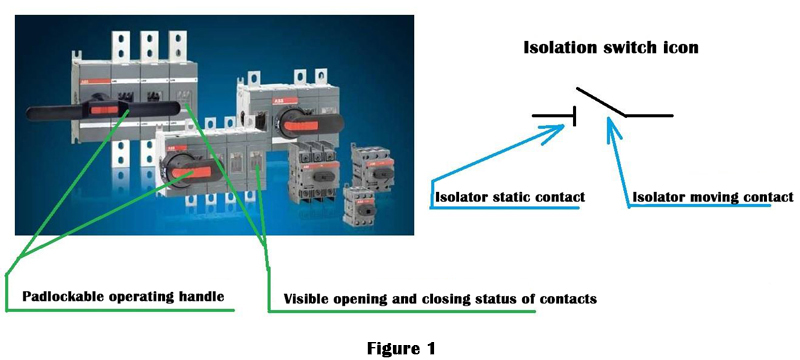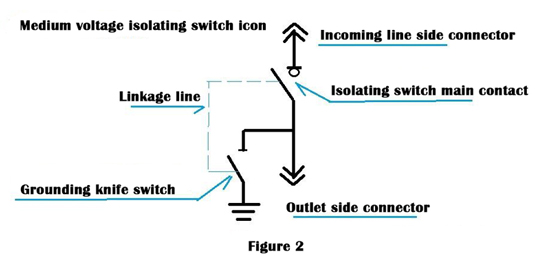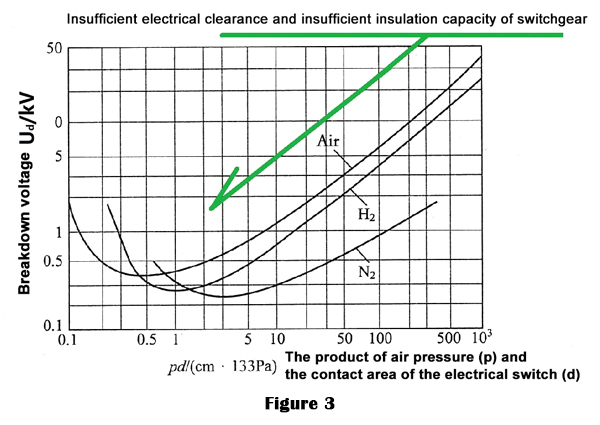What is an Isolator Switch?
Isolator switches, commonly referred to as disconnect switches or isolators, play a crucial role in electrical systems. These unassuming devices are integral to ensuring the safety of personnel and the reliability of equipment in a wide range of applications. In this blog post, we will learn about the definition of isolating switch.
First of all, we need to understand three terms, the first is an isolator, the second is a switch, and the third is their combination isolating switch appliance.
Isolator
An isolator refers to a device that can isolate a circuit. The isolation here includes two aspects. First, the isolator has the ability to isolate voltage. To achieve this, the fracture must have a sufficient opening distance to withstand the impulse voltage specified by the product; secondly, the isolator must have a clear breaking point, that is, the contact breaking state of the isolator must be visible.

We can see from Figure 1 that the contact status of the isolator must be visible. The purpose is that when the isolator is opened, no matter whether someone is inspecting the circuit below, we must ensure that the outlet side of the isolator is not live. For low-voltage isolators, as long as the shortest distance between the moving contacts and the static contacts, that is, the opening distance, is greater than the breakdown distance of air, while for medium-voltage isolators, the outlet side must be grounded. Therefore, the medium voltage isolator will be linked to a grounding knife switch - when the medium voltage isolating switch is closed, the grounding knife switch is opened at the same time. When the medium voltage isolating switch is opened, the grounding knife switch must be closed at the same time to ensure that the outlet side of the medium voltage isolating switch has Zero potential of the earth.

The so-called medium voltage refers to the power supply and distribution voltage levels between 3000V and 110kV; the so-called low voltage refers to voltage levels including 1000V and below.
The isolator structure shown in Figure 2 sometimes appears in some higher-end low-voltage isolators.
After the contacts of the isolator are opened, it is also important that the shortest distance between the movable contacts and the stationary contacts, that is, the opening distance, must be greater than the air breakdown distance corresponding to its voltage level. Regarding the breakdown voltage of air, let’s look at the figure below:

We can see from Figure 3 that the breakdown voltage of air is related to the product of air pressure p and the moving and static contact opening distance d, and there is a minimum value. The higher the air pressure, or the vacuum state, the higher the breakdown voltage of air; conversely, the lower the air pressure, the lower the breakdown voltage of air.
After clarifying the concept of isolator, let's take a look at what a switch is.
Switch
A mechanical switching appliance that can connect, carry and break current under normal circuit conditions (including specified overload operating conditions), and can carry current within a specified time under specified abnormal circuit conditions (such as short circuit) . The switch can make but not break the short-circuit current.
- The switch can connect, carry and break the operating current under normal operating conditions, but the type test parameters that the switch can break the operating current must be given, and the type test parameters that the switch can withstand the overload current rate must also be given. Without these two parameters, the switch is not allowed to open with load.
- The switch is not allowed to break short-circuit current. It can only passively withstand the thermal shock and electrodynamic shock of short-circuit current within a certain time range. There are only two switching devices that can break short-circuit current, namely circuit breakers and fuses. Therefore, we call circuit breakers and fuses active components, and all other switching appliances called passive components.
Special emphasis: The isolating switch is a passive component. It is not allowed to switch on load, let alone actively cut off the short-circuit current.
Isolating switch
An isolating switch is a switch with an isolator function.
The isolating switch not only has the function of an isolator, it can carry normal operating current, and it can also carry short-circuit current within a certain period of time, that is, it must meet the requirements of dynamic and thermal stability of switching equipment.
Let me emphasize again: the switch can only connect and break the normal operating current; the isolator can perform electrical isolation, but cannot break the current, and is not allowed to switch on load. The isolator can carry the short-circuit current for a certain period of time; the isolation switch can perform the function of a switch and also has the function of an isolator.
Tips
- Isolator switches must not be operated while carrying a load.
- The rated current of isolator switches must be 1.15 to 1.25 times greater than the calculated current.
- The dynamic thermal stability of isolator switches must meet the requirements of the calculated short-circuit current. During use, their short-time withstand current (Icw) and short-circuit making capacity must be verified.
- Isolator switches can be fitted with fuses, creating a switch-fuse combination. In some isolator switches, fuses are mounted on the blade, and this combination is referred to as a fuse switch or a load switch (only applicable to low voltage).
Isolator switches are essential passive components in the world of electrical safety and control. They provide a means of disconnecting power, ensuring the safety of personnel working on electrical systems, and facilitating maintenance and repairs. By understanding the types and applications of isolator switches, you can appreciate their importance in various industries and scenarios, making them a critical part of electrical systems.

